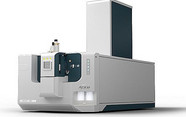Combining Raman spectroscopy and analytical imaging to assess graphite crystallinity

contributed by Malvern Panalytical |
Exploring the effect of carbon microstructure on lithium-ion battery performance
Abstract
This application note describes the combined use of static optical microscopy and Raman spectroscopy in the Morphologi G3-ID to assess the various morphological classes of carbon for use in lithium-ion battery manufacture. High levels of crystallinity, visible in the Raman spectra as the G band, are valued in the production of High Specific Charge (HSC) graphite, which increases battery performance by assisting lithium intercalation.
Introduction
With the upsurge in use of portable electronic devices such as tablets and mobile phones, through to the development of environmentally-friendly electronicallypowered vehicles, we are experiencing an unprecedented demand for batteries. Developing new, more efficient and more powerful batteries has never been more relevant.
In a previous application note, we discussed the importance of controlling the size of particles used in the manufacture of battery materials. Shape is also an important factor to consider and control, as irregularly-shaped particles not only reduce packing density, but can lead to the formation of a high viscosity electrode slurry.
Log in or register to read this article in full and gain access to The Analytical Scientist’s entire content archive. It’s FREE!

















